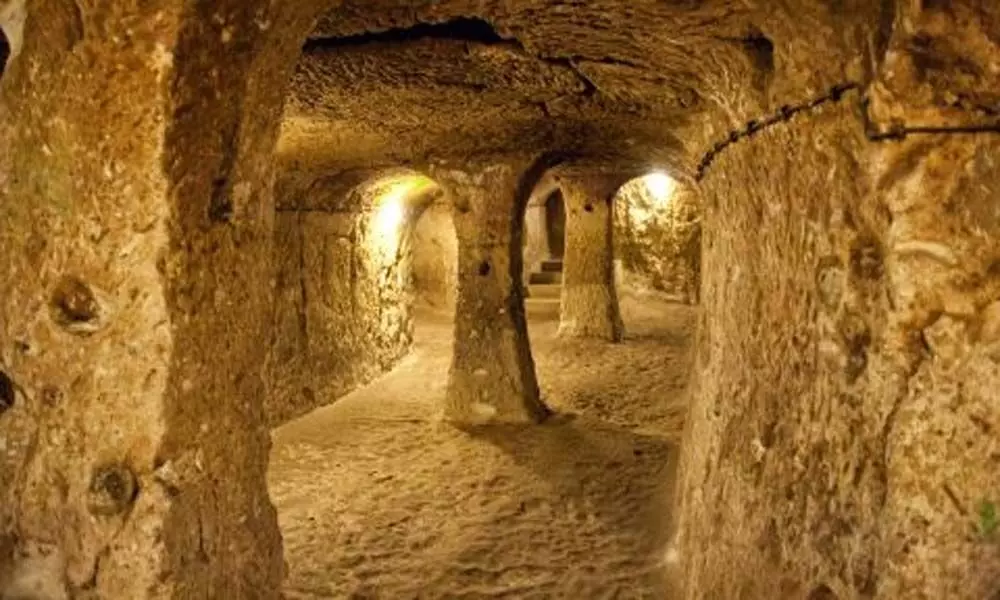Have Human Societies Ever Lived Underground In History?

Have Human Societies Ever Lived Underground In History?
- The question that arouse was that has it ever been possible to live underground with large societies.
- The most crucial thing to remember about the subway is that we are not supposed to be there.
People have traditionally journeyed underground for short periods of time, from ancient catacombs to modern subways.
The question that arouse was that has it ever been possible to live underground with large societies. While in emergency situations they had no other choice in the past. That has begun to alter in recent decades, though.
The most crucial thing to remember about the subway is that we are not supposed to be there. Their bodies aren't biologically or physically adapted for living underground, said Will Hunt, author of Underground: A Human History of the Worlds Beneath Our Feet (Random House, 2019).
For various reasons, people have lived briefly beneath the surface throughout history. They dug subsurface homes if there were no materials to build buildings with, Hunt told Live Science. People dug underground to be cool in the summer and warm in the winter in locations with harsh temperatures. It was also a safe area to hide from attackers underground. The legendary underground cities of Cappadocia in what is now Turkey were designed to shield inhabitants from both weather and battle.
Hunt explained that they were in a highly strategic location. They were under relentless attack. During emergencies, the residents went underground, but only for a short time, perhaps a few weeks at a time.
According to Atlas Obscura, Derinkuyu, one of Cappadocia's largest underground cities, dated from the 7th or 8th centuries and might have held 20,000 people.
According to National Geographic, geophysicists have discovered that another recently discovered metropolis in the region spans 5 million square feet (460,000 square metres) and may be 371 feet (113 metres) underground.If this is correct, the newly discovered Cappadocia city would be around a third the size of Derinkuyu.
Cappadocia's underground cities are a architectural masterpiece, according to Hunt. Deep wells were dug into the water table.
Ventilation shafts were formed by holes extending up to the surface. Layers of defence shielded those on the inside from intruders on the outside, including enormous, circular stones laid in front of city entrances by the ancients.
However, not all underground dwellings were as elaborate as those in Cappadocia.
Hunt pointed out that people also lived in natural and man-made caves. Built caverns can be found everywhere with the correct geology, such as stone hills formed of puff, a soft volcanic rock that's easy to dig through. He claimed that they're fairly prevalent. People all throughout the world are building cave dwellings.
According to Smithsonian magazine, approximately half of the population of Coober Pedy, Australia's largest town, lives in dugouts, or holes carved into the sides of hills.Many disenfranchised people have sought refuge underneath the surface of modern cities' abandoned infrastructure.
Although there are fewer of these 'mole people' in New York today than there were in the 1980s, Hunt estimates that around 1,000 unhoused people dwell in tunnels beneath the city's streets. Many homeless people also dwell in Las Vegas's tunnels. In Bucharest, Romania, vast colonies of orphans reside beneath the streets.
As the population of cities grows, more individuals may opt to live underground. Singapore, for example, is looking into ways to develop downhill.
According to Eun Hee Lee, an assistant professor of psychology at the University of Nottingham's Malaysia campus who studies the psychology of being underground, the technology needed to do so is currently available. The problem is persuading people to go underground.
Lee added, being underground hasn't been proved to have harmful psychological impacts as long as the lighting, room size, ceiling height, and other physical aspects of the location are comparable to those found above ground.
For example, technology like light wells, which use materials like reflecting paint to allow natural sunshine to illuminate underground places, could help combat depression caused by a lack of sunlight. On the surface, people may feel disconnected from their peers and a sense of powerlessness, but these feelings, according to Lee, are tolerable. People are still opposed to the thought of living underground.
In any event, Lee believes that people throughout the world will begin to make the transition sooner rather than later, inspired by locations like RÉSO, a 20-mile-long underground metropolis in Montreal, Canada, that includes shopping malls, businesses, hotels, and schools.
She said that in all likelihood, go underground soon. There will be more underground work environments and underground recreational areas in at least 30 years.














